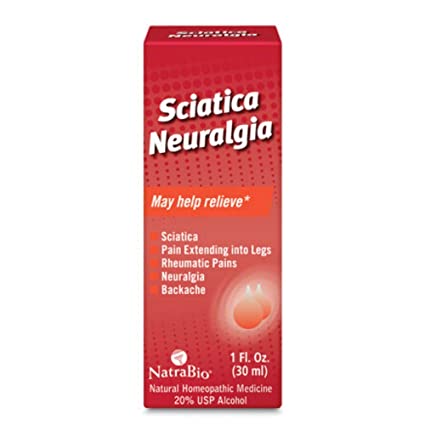Turinys
Medical treatments for sciatica (neuralgia)
svarbus. In case of sciatica, it is best to išlikite aktyvūs, in a moderate way. In the past, it was recommended to keep the bed. Nowadays, we know that this does not bring any therapeutic benefit and that by remaining active, we promote healing (see “Physical activities” below). That said, if the pain is so severe that you need to rest in bed, it is fine to do so, but not for more than 48 hours. If the pain is not relieved by rest or is unbearable, it is better apsilankyti pas gydytoją dar kartą. |
La sėdmenų neuralgija usually heals well within a few weeks. When neuralgia is caused by a specific disease, recovery or control with medication usually causes symptoms to go away.
Ne nėščios moterys, sciatica tends to go away after childbirth.
Medical treatments for sciatica (neuralgia): understand everything in 2 min
vaistai
Various drugs can be used for palengvinti skausmą. The first advisable isacetaminofenas or paracetamol (Tylenol®).
Šios nesteroidiniai vaistai nuo uždegimo (NSAIDs) available over the counter also have a pain relieving effect, in addition to being anti-inflammatory (eg, ibuprofen (Advil®, Motrin®) and acetylsalicylic acid (Aspirin®)). However, they are no more effective than acetaminophen at relieving symptoms, according to studies. Moreover, their usefulness in cases of sciatica is questioned. In fact, most of the time, inflammation is not the cause. However, if an adequate dosage of acetaminophen does not relieve the pain effectively, one can opt for nonsteroidal anti-inflammatory drugs and see if the result is better. Learn about atsargumo priemonės ir kontraindikacijos.
If the pain is resistant to these drugs, raumenų relaksantai, higher dose nonsteroidal anti-inflammatory drugs or narcotics prescribed by the doctor may be used.
Mes taip pat galime naudoti local injections a mixture of pain relievers and corticosteroids. You should know that these treatments offer short-term relief, but no long-term benefit.
Some practical tips – The most comfortable positions for miegoti would be on the side, with a pillow between the knees and under the head. You can also lie on your back, with your knees as well as your head and shoulders slightly raised by pillows. – During the first 48 hours, apply froid on the painful area can ease the pain. To do this, use an ice pack wrapped in a towel. Apply to the painful area for 10 to 12 minutes. Repeat application every 2 hours or as needed. – Subsequently, the šiluma can be beneficial. It helps relax sore muscles. Taking a hot water bath is ideal. Otherwise, apply a heat source (a warm, damp towel or heating pad) several times a day. Pastaba. Heat and cold applications on sore muscles have been used for a long time. However, recent studies question their real usefulness in relieving lower back pain.4. We have more than pati to support the use of heat rather than cold. |
Fizinė veikla
Tai geriau do not stop activities usual over 24 hours to 48 hours. Studies show that people who stay active recover faster1. Staying active helps release tension in the muscles and preserves muscle mass. If the pain is severe, resting in bed for 1 or 2 days is acceptable. However, one must resume gentle activities as quickly as possible, as soon as the pain becomes tolerable, as this promotes gijimas.
When the pain is present, it is advisable to limit yourself to daily physical activities and a few light physical exercises, such as marche. These gentle activities will not make the problem worse. On the contrary, they are beneficial. THE’naudotis stimulates the production of endorphins, hormones that inhibit the transmission of pain messages.
Subsequently, the intensity of physical exercises can be gradually increased. Swimming, stationary cycling, or other low impact exercises are generally beneficial.
Fizioterapija
If the pain has occurred during more than 4 to 6 weeks, the consultation of a physiotherapist is recommended to recover well. Various grąžtas et Tempimo to correct posture, strengthen back muscles and improve flexibility are offered. To be effective, the exercises must be performed on a regular basis.
Physiotherapy treatments can also include gentle massages, heat exposure, and electrotherapy.
- masažai. The massages performed are generally superficial, slow and regular maneuvers which make it possible to soften the painful region.
- šiluma. Different sources are directed towards sore muscles: infrared rays, hot wraps, hot balneotherapy (in Europe, thalassotherapy is often integrated into the treatment of sciatica and back pain).
- Elektroterapija. Ultrasound, transcutaneous electrical stimulation or TENS, ionizations, laser, etc. also relieve pain by scrambling nerve messages.
chirurgija
If the pain persists daugiau nei 3 mėnesių despite the treatments provided, the chirurgija can be considered. If the sciatica is related to a herniated disc, you should know that surgery is necessary in less than 5% of cases. The surgery will relieve the pressure that the spinal disc exerts on the sciatic nerve.










